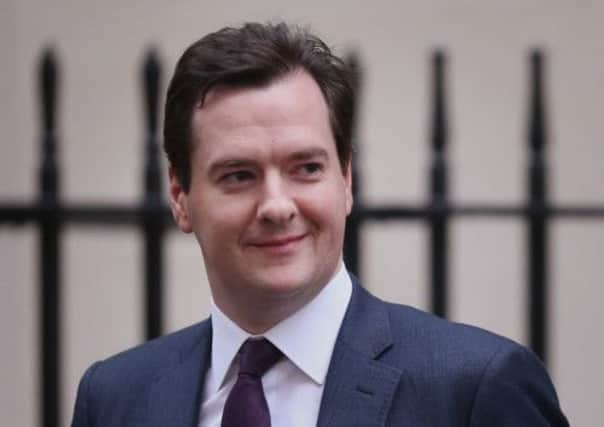Comment: Tears for Chancellor whose sums don’t add up


And while it was indeed a solemn occasion, there has been mischievous speculation that, while Osborne may have been touched by the passing of an old lady, it could also be the case that he was considering the impact of the numbers he would be presiding over this week.
The Office for National Statistics laid bare the public finance figures for the full 2012-13 financial year. These showed that public sector net borrowing – excluding financial interventions - stood at £86.2 billion. This was in line with the Office for Budget Responsibility’s (OBR) March forecast, albeit one that had been revised upwards.
Advertisement
Hide AdAdvertisement
Hide AdBut here comes the tricky part: those flattering “interventions”. When stripping out the one-off tweaks from the Royal Mail pension scheme, fixes from the Bank of England’s quantitative easing programme, and boosts from the 4G auction and the Special Liquidity Scheme, borrowings hit £120.6bn – about the same as last year.
Some – mainly the opposition – berated the Chancellor for not having reduced borrowing enough. But others thought it was a good job it hadn’t risen higher, what with flat-lining tax receipts and the increasing cost of higher unemployment.
The trouble for Osborne – aside from tomorrow’s will-we-won’t-we assessment of whether we have fallen into the “triple dip” recession trap – is the cumulative net debt, now at £1.2 trillion, giving us a GDP ratio of 75.4 per cent. Original plans for this to come down by 2013-14 have been scrapped, with the Centre for Economics and Business Research (CEBR) estimating the ratio will hit a peak of 92.9 per cent by 2017-18, and Barclays – using the Maastricht definition, more internationally comparable – estimating a peak at 101 per cent of GDP.
IMF chief economist Olivier Blanchard warned last week that the Chancellor was “playing with fire” if he continued with his current deficit reduction plan – but the fact is Osborne is not actually doing it. As Blerina Uruçi, UK economist for Barclay’s points out, much of the cost cutting horror is yet to come.
While Osborne has maintained his tough talk in an effort to prevent a “bond market strike”, his Treasury has in fact been easing up on austerity. Whereas the Coalition’s original plan called for £24bn of tightening in the current year, the desperate fragility of the economy means this has been pared back to just £10bn. But the overall plan to squeeze the economy by £130bn by 2016-17 remains little changed – it just means the bulk of the heavy lifting will have to be done later and in a much shorter time frame. And that will hurt. No wonder he was crying.
Sterling’s fall gives hope to manufacturers
There was more gloomy news from UK factories in a CBI survey, so why are manufacturers feeling so optimistic?
Although orders plunged to a 30-month low in April, a goodly number of respondents expect output to rise on the back of orders and exports in the next three months, despite tough domestic and international (mainly European) conditions.
So what gives? Could it be that the fall in the value of sterling is making them feel better? Perhaps George Osborne has something to stop him shedding more tears after all.